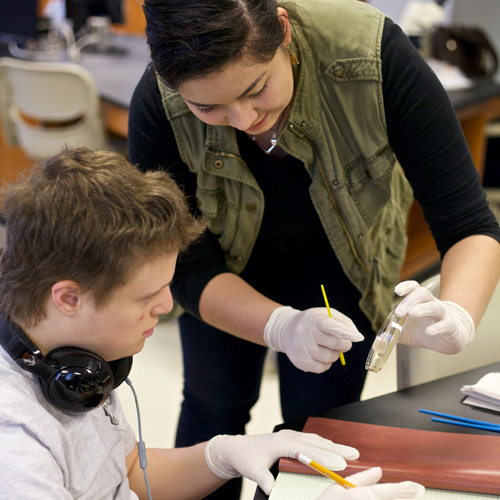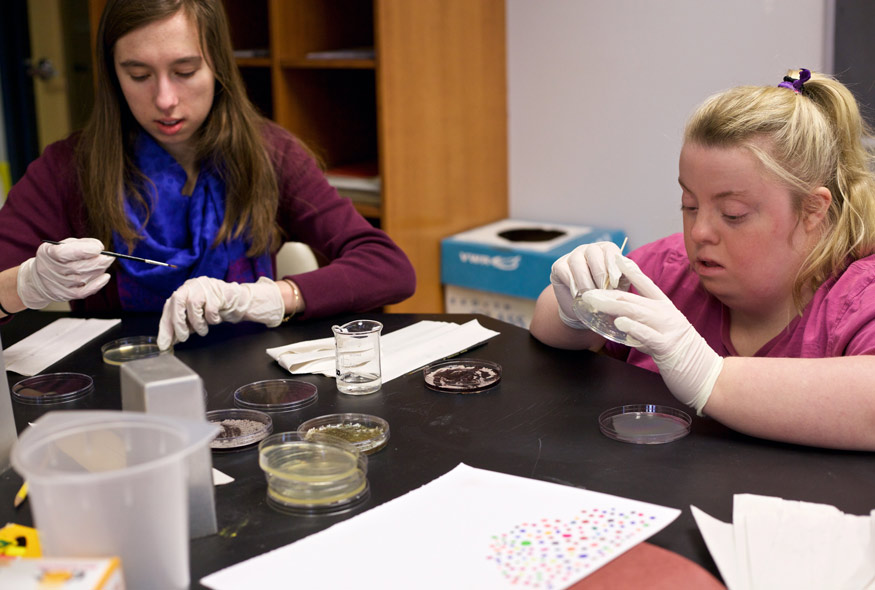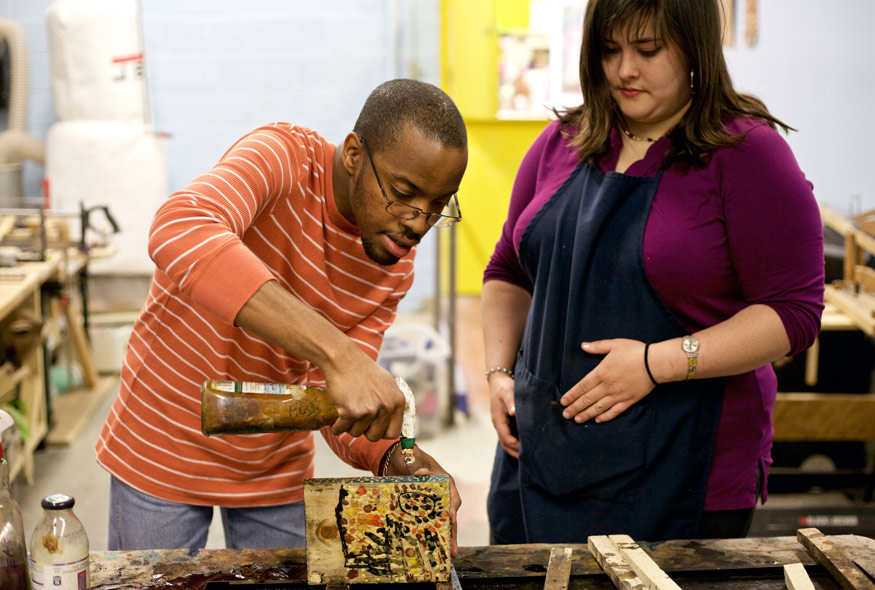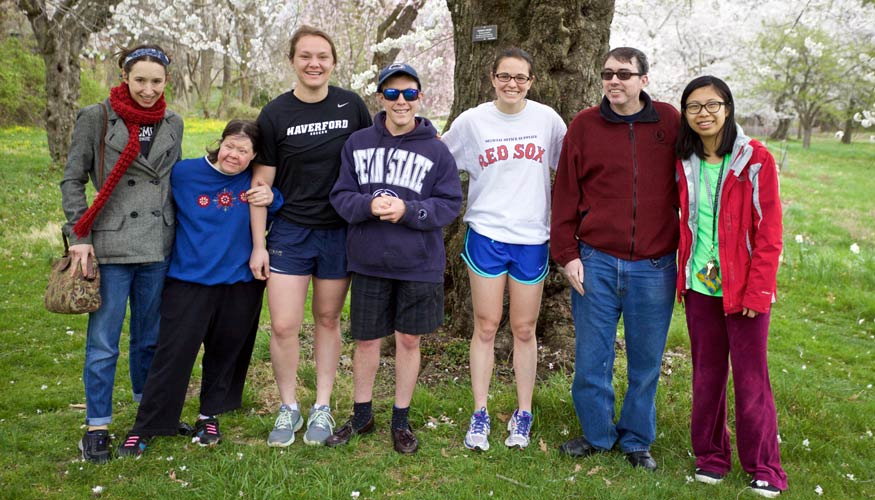
Symbiosis
The artists from RHD’s Center for Creative Works wanted to break the rules. In a Haverford College lab class, Haverford students demonstrated how to plate live bacteria in a petri dish. The instructions were to not break the surface. That was against the rules. CCW artists with intellectual disabilities immediately wanted to break the surface. Why not? they kept asking. Why can’t we? Let’s find out what happens!
“Eventually, we said: Um … I guess so. I guess you can,” Haverford student Lindsey Lopes said.
“That lack of control meant we were terrified the whole time,” Haverford student Sarah Waldis said. “We were pushing against the boundaries and rules of the lab space, and in the moment it was really scary. It won’t grow the way you want it to, it never works how you want it to. What if nothing works? It really felt like a risk, and of course the results were amazing. We got out of our comfort zone and produced something very incredible.”
“It was 3-D and gross and beautiful,” Lopes said.

The results, called bio-art, were one of the centerpieces of “Symbiosis: Art, Science, & Community,” a public exhibition at Haverford that also featured woodworking and other artwork that came from the collaboration of CCW artists and Haverford College students. Working with a group of students at Haverford College in an extraordinary months-long collaboration, RHD artists with intellectual disabilities found themselves in the unique position of teaching college students what could happen when people step out of their comfort zone, learn from each other, and expand their worlds in new and interesting ways.
“It was truly an adventure for both parties — and our students probably learned a lot more than the artists from CCW,” said Haverford Professor Kristin Lindgren.
This unique partnership began in Lindgren’s disability studies class, where students wanted to find a local organization they could work with whose philosophy connected with them. Natalie DiFrank, a student in the class, had interned at Center for Creative Works, a unique, creative day service program with a focus on arts and arts-based skill-building, and pitched it to the class.
“You’ve got to come and see it,” DiFrank said, so they did.
“It’s so full of creativity, such a vibrant space,” Lindgren said. “Even before I’d talked with the staff, I thought: Something interesting is happening here.”
CCW Director Lori Bartol and Vocational Arts and Education Supervisor Stephanie Petro-McClellan immediately agreed to a partnership that would see Haverford students working with artists at the studio, as well as CCW artists spending time on the Haverford campus.
“That was the big thing, for me,” Petro-McClellan said. “Most of the time, it’s people from the community coming here to volunteer. But our artists got a lot out of being on the campus with the students.”
“I loved going to college,” said Mary, a CCW artist. “I loved the students — they’re my friends.”
Haverford student Maggie Heffernan said: “We weren’t seeking the traditional volunteer experience of ‘us helping them.’ We wanted a partnership, and that’s what it was. We got to know the artists, we formed relationships with them.”
“It was very much a collaborative experience,” said Haverford student Courtney Carter. “I feel very lucky to have stumbled upon this. This partnership struck me on levels beyond academic — personal, emotional, stretching my mind.”
The CCW artists took to their college experience with enthusiasm. Haverford swag from the bookstore was in high demand, and they ate in the cafeteria with the rest of the students each day.

“You could see our artists gain a sense of ownership,” Bartol said. “They felt like they belonged there, that they weren’t different. They blended in, and became part of the community, which is what we strive for.”
The way the CCW artists constantly pushed the students to look at things in a different way, had an impact.
“The students developed an ability to go outside their comfort zone — both in terms of art making and in terms of spending time with people with intellectual disabilities,” Lindgren said. “When the students spent time at CCW, they came to see the artists there not as a ‘population,’ but as individuals.”
“We really felt like we were all in this together,” Lopes said.
In fact, when the students were in the studio, it was the CCW artists who took on the teaching role. Lopes at one point stared at the blank sheet of paper in front of her, not sure what to do, until a CCW artist named Paige walked over and asked: “What’s the matter?” When Lopes said she just didn’t know where to start or what to do, Paige smiled and offered some advice.
“Just start,” Paige said. “Do whatever you feel like doing.”
Lopes took a deep breath, put brush to paper and joined in.

Photos courtesy Caleb Eckert


